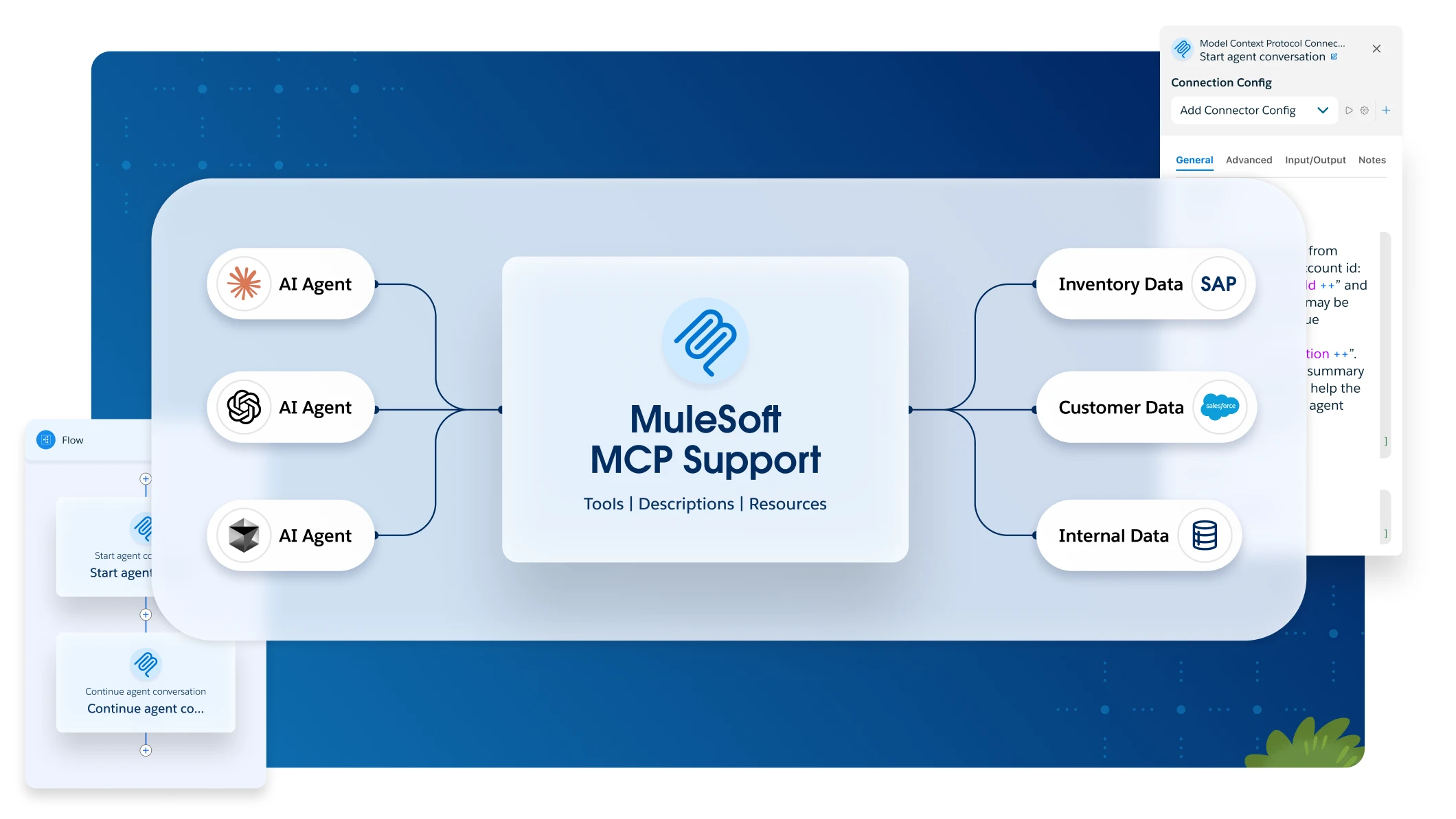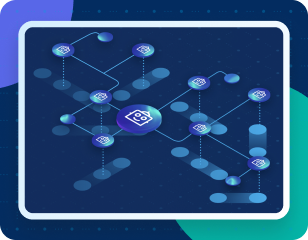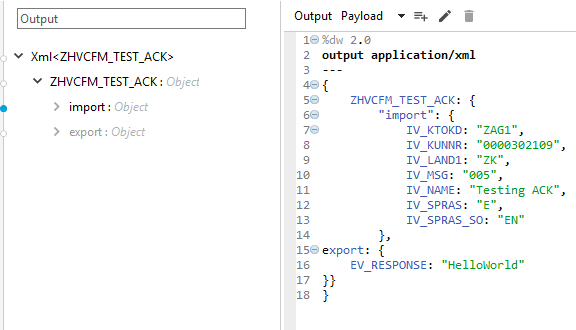
SAP Connector 5.2 Examples
Establish an SAP Connection
Create a Mule app that establishes a connection to SAP and receives a function using the SAP connector’s Function source operation, which returns the export parameter to SAP.
-
In Anypoint Studio, create a new Mule project.
-
Click the Exchange icon (X) in the upper-left of the Studio task bar.
-
In Exchange, click Login and supply your Anypoint Platform username and password.
-
In Exchange, select Connectors as the type, and search for "SAP Connector".
-
Select the SAP Connector for Mule 4 tile, and click Add to project.
-
Drag the SAP Function source operation to the source area of the canvas at the start of a flow.
-
Create a new SAP Inbound global element configuration and specify the environment values.
-
Add a Transform Message component to the flow and specify the details based on the metadata:

The flow now contains Function source in the canvas source area and the Transform Message, as shown in the following image:
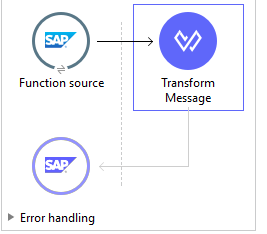
The SAP Design Studio displays feedback about the received object and its response:
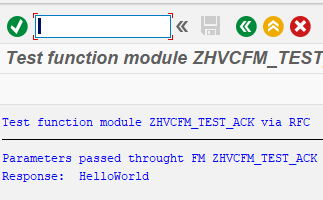
Send an IDoc to SAP
In this example, you create a Mule app to send an IDoc to SAP:
-
In Anypoint Studio, create a new Mule project.
-
Drag the HTTP Listener operation to the canvas and use the default values.
-
Drag the HTTP Request operation to the canvas and set Path to
/sendIDoc.
Use the same HTTP configuration as used for the HTTP Listener operation. -
Create a new SAP outbound global element configuration and specify the environment values.
-
Click Test Connection to confirm that Mule runtime engine can connect with the SAP instance.
-
If the connection is successful, save the configuration.
Otherwise, review and correct any invalid parameters, and test again. -
Select the SAP Connector and add the Send IDoc operation next to the HTTP operation.
-
Configure the operation with the following values:
Parameter Value Display Name
Name to display for the Send IDoc operation
Connector configuration
SAP_Outboundfor the global element you createdKey
MATMAS01
Content
#[payload] -
Drag a Transform Message component before the SAP connector, and click the component to open its properties editor.
-
After metadata is retrieved, select the respective fields to populate for the employee.
The XML for the transform script shows the DataWeave content for Transform Message:
%dw 2.0 output application/xml --- read('<?xml version="1.0"?> <MATMAS01> <IDOC BEGIN="1"> <EDI_DC40 SEGMENT="1"> <TABNAM>EDI_DC40</TABNAM> <MANDT>800</MANDT> </EDI_DC40> </IDOC> </MATMAS01> ',"application/xml") -
Add a Logger directly after the SAP endpoint.
When you run your app, Logger displays messages in the Anypoint Studio console that enable you to see the connector payload in the logs. -
Click File > Save to save your app.
-
Click Run > Run as > Mule Application to run the app.
Anypoint Studio provides a web server you can use to test the app from a browser. -
From a web browser, test the application by entering an employee’s internal ID, first name, and last name in the form of the following query parameters:
http://localhost:8081/sendIDocMule runtime engine conducts the query and adds the employee record.
Trigger Any Incoming IDoc Request
This example acts like an RFC server and registers itself at an SAP gateway. It waits for any incoming IDoc requests from an external SAP system.
-
In Anypoint Studio, create a new Mule project.
-
Add the SAP connector to your project from Exchange.
-
Drag the SAP Document source operation to the start of a flow in the source area of the canvas.
-
Create a new SAP Inbound global element configuration and specify the environment values.
-
Add a Logger right after the Document source.
When you run your app, Logger displays messages in the Anypoint Studio console that enables you to see the connector payload in the logs. -
In a new Mule flow, drag the HTTP Listener operation to the canvas and use the default values.
-
Drag the HTTP Request operation to the canvas and set Path to
/triggerIDoc.
Use the same HTTP configuration as used in the HTTP Listener operation. -
Add a Transform Message component to the flow.
The content of this message is the payload of the function triggers IDocs to be sent from SAP to the SAP IDoc source.%dw 2.0 output application/xml --- { ZMMFM_TRIGGER_IDOC_MATMAS: { "import": { IV_MTYP: "MATMAS" , IV_OBJ: "23" , IV_SYS: "MULE11_LS" } , export: { EV_RET: "0" },export: { EV_OBJ: "0000000003526552" },export: null,changing: null, tables: { T_MSG: null }, } } -
Drag the SAP Synchronous remote function call operation to the source area of the canvas.
This operation triggers the IDocs that are requested to be sent to the SAP IDoc source. -
Enter the key value.
If the key value is correct, the payload of the function in Transform Message appears:
-
Click File > Save to save your app.
-
Click Run > Run as > Mule Application to run the app.
Anypoint Studio provides a web server you can use to test the app from a browser. -
From a web browser, test the application by entering "http://localhost:8081/triggerIDoc".
On the canvas the flows should look like this:
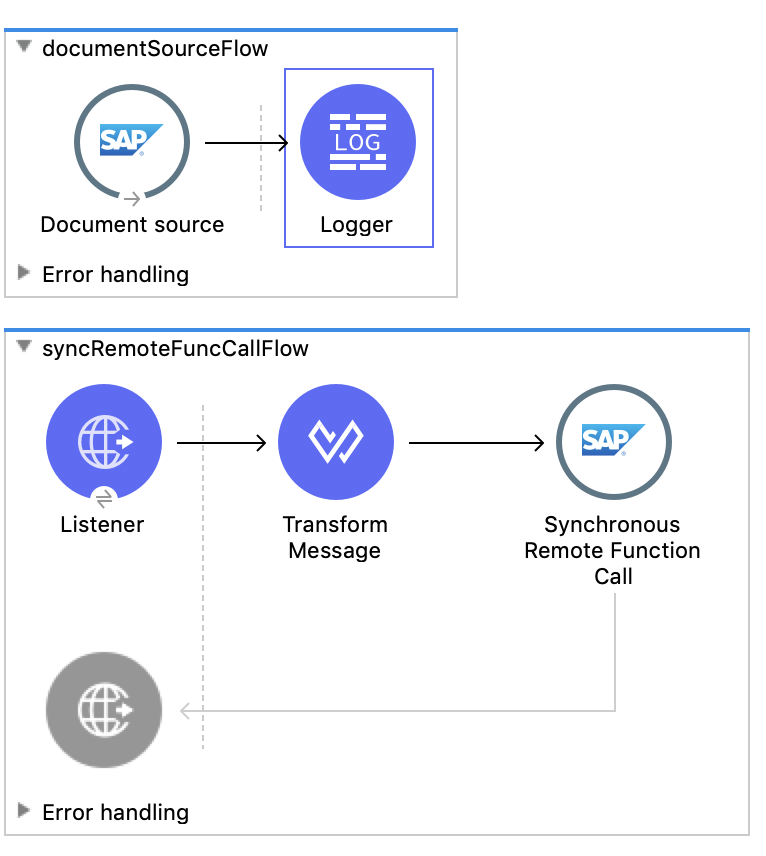
Example response:
<MATMAS01>
<IDOC BEGIN="1">
<EDI_DC40 SEGMENT="1">
<TABNAM>EDI_DC40</TABNAM>
<MANDT>800</MANDT>
<DOCNUM>0000000003572826</DOCNUM>
<DOCREL>740</DOCREL>
<STATUS>30</STATUS>
<DIRECT>1</DIRECT>
<OUTMOD>2</OUTMOD>
<IDOCTYP>MATMAS01</IDOCTYP>
<MESTYP>MATMAS</MESTYP>
<SNDPOR>SAPIDE</SNDPOR>
<SNDPRT>LS</SNDPRT>
<SNDPRN>T90CLNT090</SNDPRN>
<RCVPOR>MULE11_TP</RCVPOR>
<RCVPRT>LS</RCVPRT>
<RCVPRN>MULE11_LS</RCVPRN>
<CREDAT>20191004</CREDAT>
<CRETIM>050305</CRETIM>
<SERIAL>20191004050305</SERIAL>
</EDI_DC40>
...
```XML to Send an IDoc to SAP
<?xml version="1.0" encoding="UTF-8"?>
<mule xmlns:ee="http://www.mulesoft.org/schema/mule/ee/core"
xmlns:sap="http://www.mulesoft.org/schema/mule/sap"
xmlns:http="http://www.mulesoft.org/schema/mule/http"
xmlns="http://www.mulesoft.org/schema/mule/core"
xmlns:doc="http://www.mulesoft.org/schema/mule/documentation"
xmlns:xsi="http://www.w3.org/2001/XMLSchema-instance"
xsi:schemaLocation="http://www.mulesoft.org/schema/mule/core
http://www.mulesoft.org/schema/mule/core/current/mule.xsd
http://www.mulesoft.org/schema/mule/http
http://www.mulesoft.org/schema/mule/http/current/mule-http.xsd
http://www.mulesoft.org/schema/mule/sap
http://www.mulesoft.org/schema/mule/sap/current/mule-sap.xsd
http://www.mulesoft.org/schema/mule/ee/core
http://www.mulesoft.org/schema/mule/ee/core/current/mule-ee.xsd">
<configuration-properties file="mule-artifact.properties"/>
<sap:outbound-config name="SAP_Outbound" doc:name="SAP Outbound" >
<sap:simple-connection-provider-connection
applicationServerHost="${sap.jcoAsHost}"
username="${sap.jcoUser}"
password="${sap.jcoPasswd}"
systemNumber="${sap.jcoSysnr}"
client="${sap.jcoClient}"
language="${sap.jcoLang}" />
</sap:outbound-config>
<http:listener-config name="HTTP_Listener_config"
doc:name="HTTP Listener config" >
<http:listener-connection host="0.0.0.0" port="8081" />
</http:listener-config>
<flow name="demo-idoc-clientFlow" >
<http:listener config-ref="HTTP_Listener_config"
path="/idoc" doc:name="Listener" />
<ee:transform doc:name="Transform Message" >
<ee:message >
<ee:set-payload ><![CDATA[%dw 2.0
output application/xml
---
read('<?xml version="1.0"?>
<MATMAS01>
<IDOC BEGIN="1">
<EDI_DC40 SEGMENT="1">
<TABNAM>EDI_DC40</TABNAM>
<MANDT>800</MANDT>
</EDI_DC40>
</IDOC>
</MATMAS01>
',"application/xml")
]]></ee:set-payload>
</ee:message>
</ee:transform>
<sap:send config-ref="SAP_Outbound" doc:name="Send IDoc"
key="MATMAS01"/>
<logger level="INFO" doc:name="Logger" message="#[payload]"/>
</flow>
</mule>